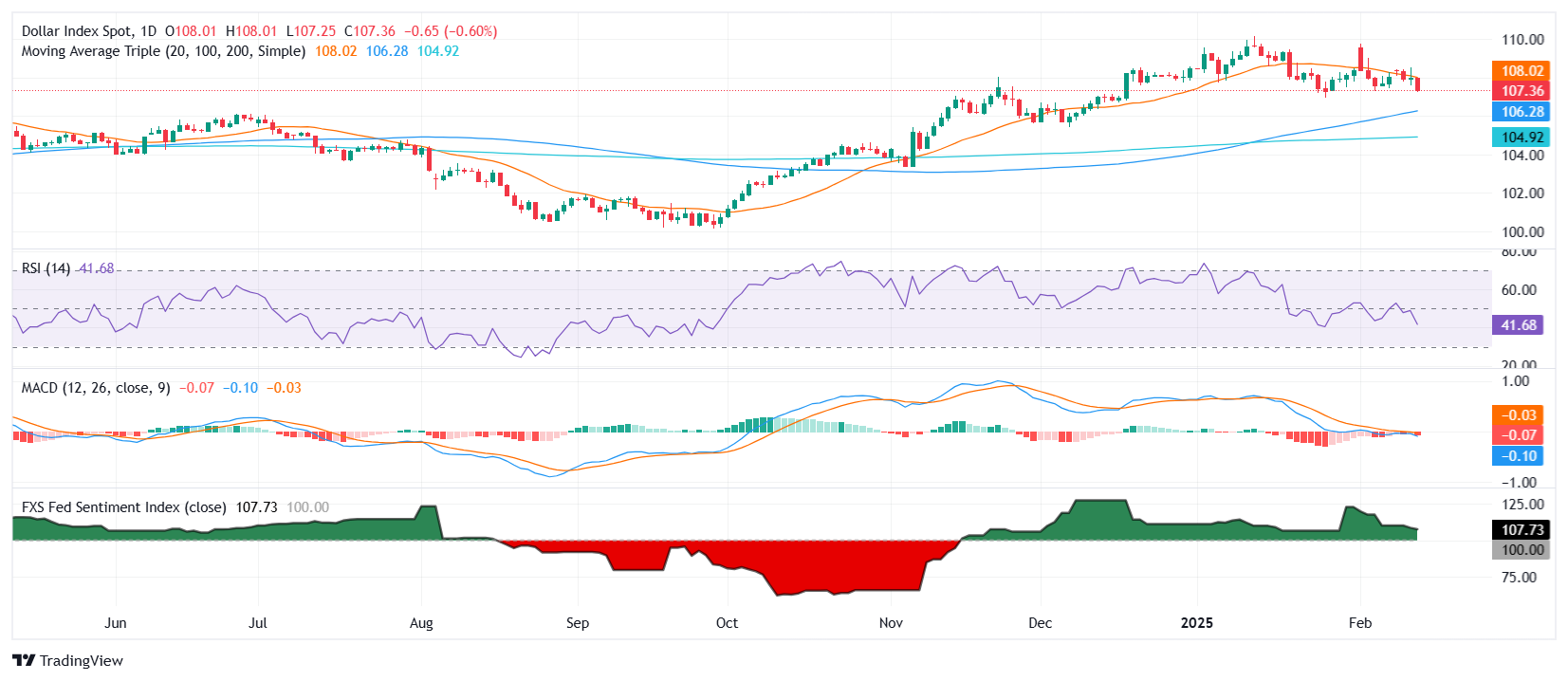The US dollar lost ground as investors reacted to fresh signals on potential trade policy changes, fueling uncertainty over the global economic outlook. Renewed speculation about tariff adjustments has led traders to reassess their positions, weighing the impact on inflation, growth, and Federal Reserve policy.
Markets have been closely watching developments on US trade measures, with concerns rising over how potential tariffs could affect key sectors, from manufacturing to consumer goods. A more aggressive stance on trade restrictions could stoke inflationary pressures, forcing the Fed to keep interest rates elevated for longer—while easing measures could support global trade, reducing demand for the safe-haven dollar.

Dollar Index 1-D Chart as of February 13th, 2025 (Source: Trading View)
The greenback’s pullback also comes as recent US economic data suggests a mixed picture, raising questions about the strength of the recovery. While inflation remains a key concern, signs of softening consumer demand and slower job growth have led to speculation that the Fed may have to adjust its policy stance in the coming months.
As a result, investors have begun shifting toward riskier assets, boosting currencies like the euro, Australian dollar, and emerging market FX, which stand to benefit from improved global trade conditions. Equities also saw a modest lift, as markets interpreted tariff discussions as a potential signal for changing US trade strategy.
Despite the recent weakness, the US dollar remains supported by its yield advantage, with the Fed still standing firm on inflation control. However, any further trade policy shifts or signals from Fed officials could lead to additional volatility, keeping traders on edge.
Looking ahead, market participants will be closely monitoring updates from US policymakers and global trade partners, as well as key economic indicators that could influence Fed rate expectations. If trade tensions escalate, the dollar could see renewed strength, but a more conciliatory stance may lead to continued downside pressure.
For now, the dollar’s trajectory remains uncertain, with investors awaiting clearer policy signals before making their next move.













